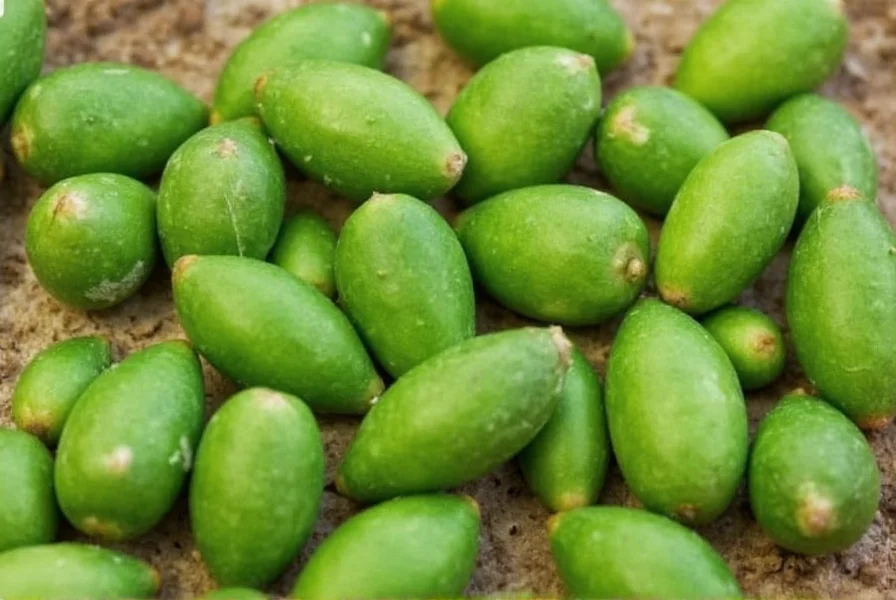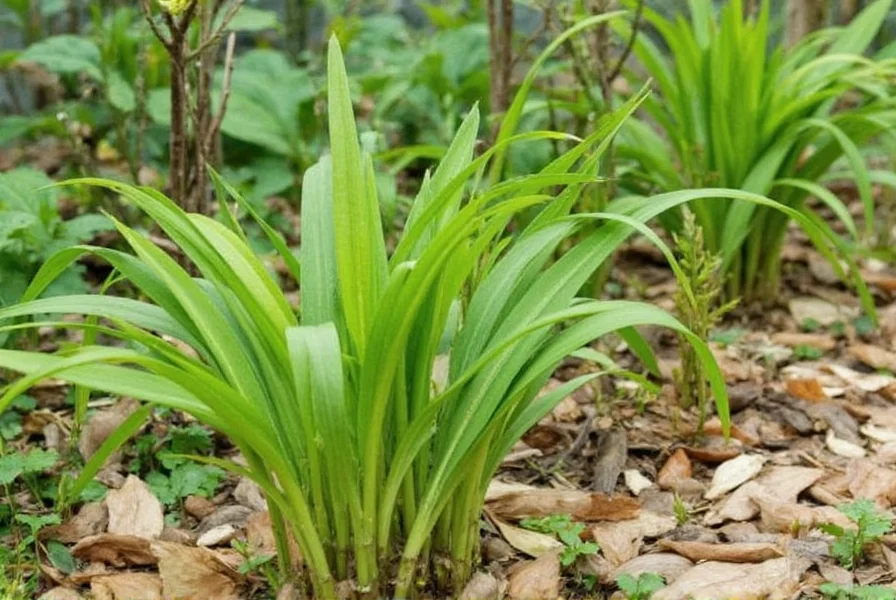Planting ginger at home is simpler than many gardeners realize, offering fresh, flavorful rhizomes for cooking and health benefits. This tropical perennial thrives in warm, humid conditions but can be grown successfully in various climates with proper care. Whether you're working with a garden bed or container, understanding ginger's specific needs ensures a bountiful harvest.
Understanding Ginger's Growth Requirements
Ginger (Zingiber officinale) isn't actually a root but a rhizome—a horizontal underground stem that produces roots and shoots. This distinction matters because it affects how you should plant and care for your ginger. Unlike true roots, rhizomes have 'eyes' or growth buds that develop into new plants. When selecting ginger for planting, look for plump, firm rhizomes with multiple visible eyes. Grocery store ginger can work, but organic varieties are preferable since conventional ginger is often treated with growth inhibitors.
Best Time to Plant Ginger
The ideal planting window depends on your climate zone:
| Climate Zone | Recommended Planting Time | Soil Temperature |
|---|---|---|
| Tropical (zones 9-12) | Year-round, but best in spring | 70-85°F (21-29°C) |
| Temperate (zones 4-8) | 4-6 weeks after last frost | At least 60°F (15°C) |
| Cool climates | Start indoors 8-10 weeks before last frost | 65-75°F (18-24°C) |
Ginger requires 8-10 months of warm growing conditions to produce substantial rhizomes. In cooler climates, treat it as a seasonal crop or grow it indoors year-round.
Selecting and Preparing Ginger Rhizomes
Choose plump, firm ginger rhizomes with multiple visible growth buds (eyes). Organic ginger works best as conventional grocery store ginger may be treated with growth inhibitors. Before planting:
- Soak rhizomes in lukewarm water for 1-2 hours to rehydrate
- Cut into 1-2 inch pieces, ensuring each has 1-2 healthy eyes
- Allow cut surfaces to dry and form a callus (1-2 days)
- Optional: Dust cut ends with powdered sulfur or cinnamon to prevent rot
This preparation process significantly increases your success rate when learning how to grow ginger at home.
Soil Preparation for Optimal Growth
Ginger thrives in rich, well-draining soil with slightly acidic pH (5.5-6.5). Create the ideal planting medium by:
- Mixing equal parts garden soil, compost, and perlite or coarse sand
- Adding 2-3 inches of organic matter to garden beds
- Ensuring soil remains consistently moist but never waterlogged
- Testing pH and adjusting with sulfur (to lower) or lime (to raise) as needed
For container planting, use a high-quality potting mix amended with coconut coir for moisture retention. The best soil for ginger planting combines excellent drainage with consistent moisture-holding capacity.

Step-by-Step Planting Process
Follow these precise steps for successful ginger planting:
- Choose a location with partial shade (2-5 hours of morning sun)
- Dig planting holes 2-4 inches deep, spacing them 8-12 inches apart
- Place rhizome pieces horizontally with eyes facing up
- Cover with 1-2 inches of soil, gently firming the surface
- Water thoroughly until soil is moist but not saturated
- Apply 1-2 inches of organic mulch to retain moisture
For container planting, select pots at least 12 inches deep with drainage holes. Fill with prepared soil mix, leaving 2-3 inches of space below the rim. Plant rhizomes following the same depth and orientation guidelines.
Essential Care Requirements
Proper care ensures healthy ginger growth throughout the growing season:
Watering Schedule
Maintain consistent soil moisture—like a wrung-out sponge. Water when the top inch of soil feels dry. During active growth (spring-summer), this typically means watering 2-3 times weekly. Reduce watering in fall as plants prepare for harvest.
Light Requirements
Ginger prefers dappled sunlight or partial shade. In tropical climates, provide protection from intense afternoon sun. In cooler climates, maximize available sunlight while avoiding scorching.
Fertilizing Strategy
Feed monthly with balanced organic fertilizer (10-10-10) or compost tea. Increase potassium during rhizome development phase (mid-summer onward) to encourage robust growth.

Troubleshooting Common Ginger Growing Problems
Even with proper care, gardeners may encounter these issues when learning how to plant ginger successfully:
- Yellowing leaves: Usually indicates overwatering. Allow soil to dry slightly between waterings.
- Rotting rhizomes: Caused by poor drainage or cold temperatures. Ensure proper soil preparation and planting depth.
- Slow growth: May need more nutrients or warmer temperatures. Apply balanced fertilizer and ensure adequate warmth.
- Pests: Watch for aphids and spider mites. Treat with insecticidal soap if needed.
Harvesting and Storing Your Ginger
Harvest ginger when leaves yellow and die back, typically 8-10 months after planting. For partial harvests, carefully dig around the edges of the plant to remove outer rhizomes while leaving the center growing. For full harvest:
- Stop watering 1-2 weeks before harvest to dry the soil slightly
- Cut back yellowing foliage to 2 inches above soil
- Gently dig around the entire plant with a garden fork
- Lift the rhizome cluster carefully to avoid damage
- Shake off excess soil (don't wash immediately)
- Cure in a shaded, well-ventilated area for 3-5 days
Store harvested ginger in a cool, dark place or refrigerate in a paper bag. Properly cured ginger can last 2-3 weeks at room temperature or 4-6 weeks refrigerated.
Frequently Asked Questions
Can I grow ginger from store-bought ginger?
Yes, you can grow ginger from store-bought rhizomes, but organic ginger works best. Conventional grocery store ginger is often treated with growth inhibitors that prevent sprouting. Look for plump pieces with visible growth buds (eyes), soak them to rehydrate, and allow cut surfaces to callus before planting for the highest success rate when learning how to plant ginger at home.
How deep should I plant ginger rhizomes?
Plant ginger rhizomes 2-4 inches deep in well-draining soil, with the growth buds (eyes) facing upward. In heavier soils or wetter climates, plant shallower (2 inches). In sandy soils or drier conditions, plant slightly deeper (up to 4 inches). Proper ginger planting depth ensures optimal growth while preventing rot, which is crucial for successful ginger cultivation.
How long does it take for ginger to grow from planting to harvest?
Ginger typically requires 8-10 months from planting to full harvest. You'll see green shoots emerge in 2-4 weeks under ideal conditions. The plant will develop foliage throughout the growing season, with rhizomes gradually expanding underground. Harvest when leaves yellow and die back, usually in late fall. For 'baby ginger,' you can harvest earlier (4-6 months) for a more tender, less fibrous product.
What's the best way to grow ginger in containers?
For container growing, select pots at least 12 inches deep with drainage holes. Use a high-quality potting mix amended with coconut coir for moisture retention. Plant rhizomes 2-4 inches deep with eyes facing up. Place containers in partial shade (morning sun with afternoon shade). Water consistently to maintain even moisture, and fertilize monthly with balanced organic fertilizer. Container-grown ginger requires more frequent watering than garden beds but offers better control over soil conditions.
Why are my ginger plant's leaves turning yellow?
Yellowing leaves typically indicate overwatering or poor drainage. Ginger prefers consistently moist but not waterlogged soil. Allow the top inch of soil to dry slightly between waterings. In some cases, yellowing can signal nutrient deficiency—apply a balanced organic fertilizer if needed. If yellowing occurs in fall, it's likely natural as the plant prepares for harvest. Proper moisture management is essential when learning how to plant ginger successfully.










 浙公网安备
33010002000092号
浙公网安备
33010002000092号 浙B2-20120091-4
浙B2-20120091-4